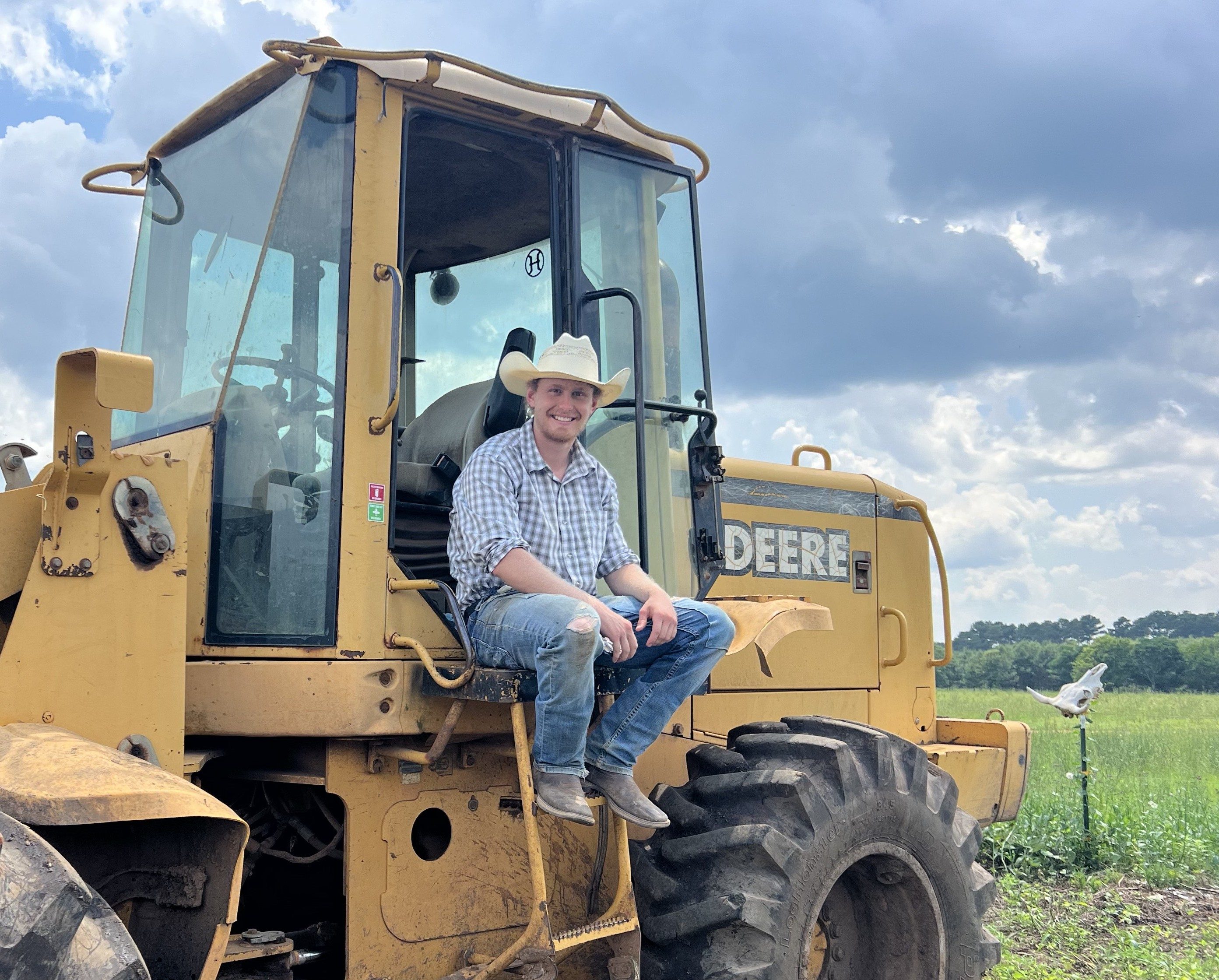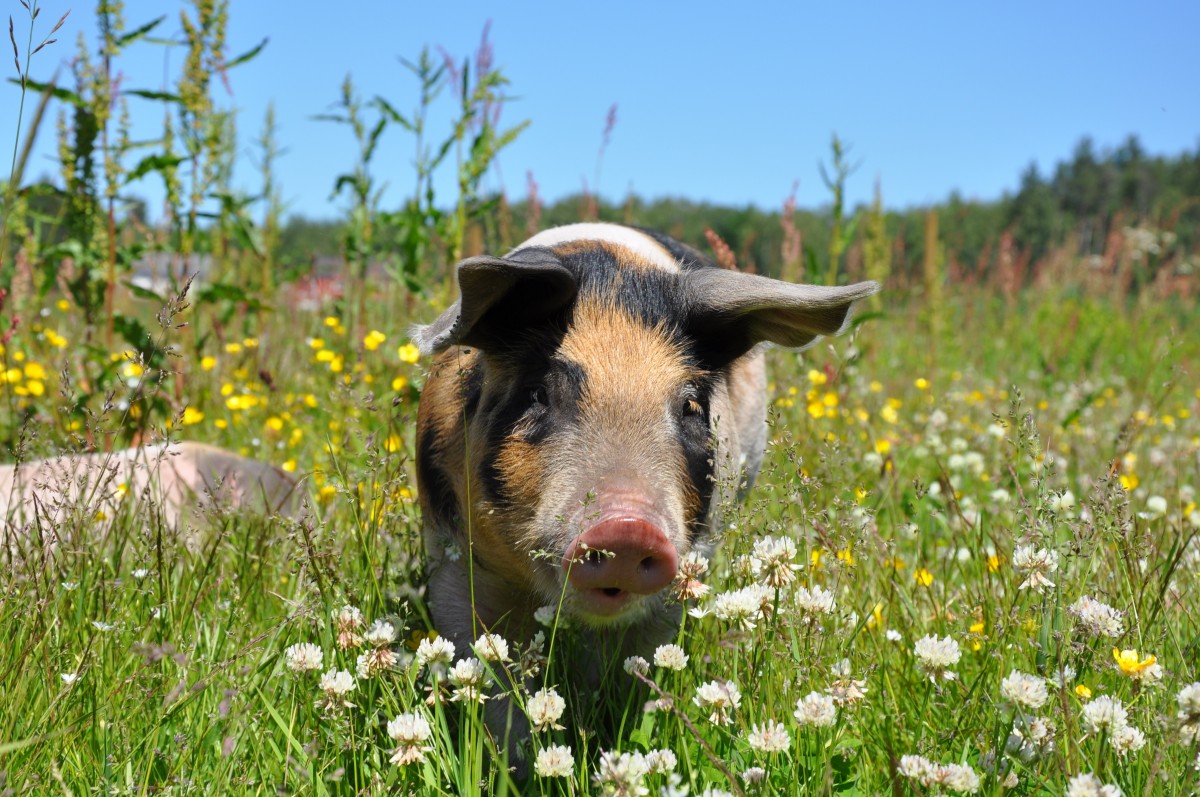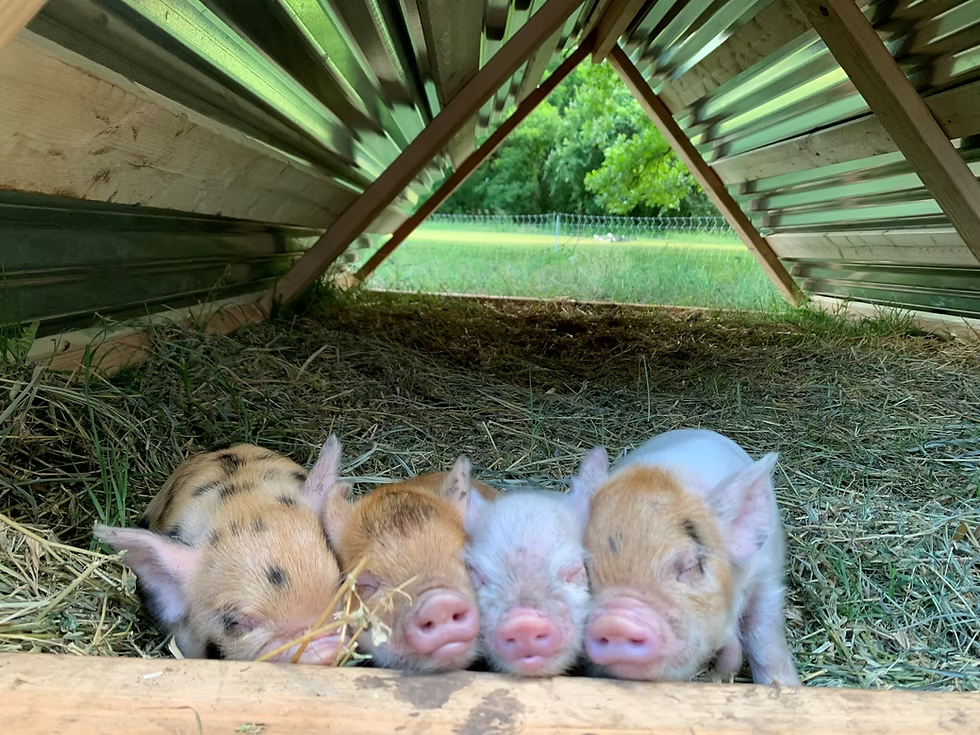TheFarmersDigest
The Farmers Digest
Jun 16, 2025

Editor
Chris Pigge

Editor
Miles Falk
Pasture Pigs Part 2: Management Strategies for Success

Having established the challenges and realities of pasture pig operations in Part 1, we now turn to the specific management strategies that can make the difference between success and failure. These techniques require dedication, observation skills, and willingness to adapt, but they represent the foundation upon which profitable pasture pig operations are built.
Strategic Paddock Design: The Hub and Spoke System and Its Trade-offs
Successful pasture pig operations start with thoughtful paddock design that minimizes daily labor while maximizing pasture utilization. Research from North Carolina State University confirms that management systems where paddocks are subdivided into small plots with periodic rotation among them can significantly reduce pasture damage.
The hub and spoke system offers one approach that many operations use initially. Picture a wagon wheel: the hub serves as "home base" where pigs always have access to water, shelter, and supplemental feed, while individual paddocks radiate outward like spokes. This design eliminates the need to move water systems, feeders, and shelters with each rotation—often the most labor-intensive aspect of pasture pig management.
The Critical Downsides of Hub and Spoke Systems
However, the hub and spoke system comes with serious drawbacks that contradict fundamental rotational grazing principles. The central hub area becomes permanently destroyed from constant pig traffic, creating a foul-smelling, parasite-concentrated zone that undermines one of the primary benefits of rotation—getting animals away from their waste and parasites.
This permanent "sacrifice" area develops into exactly what rotational systems aim to avoid: a concentrated manure and parasite zone where pigs spend significant time daily. The smell alone can become overwhelming, particularly problematic for operations near neighbors or those depending on farm visits for direct marketing.
The hub system also creates behavioral issues, as pigs learn to return to the comfortable, familiar area rather than utilizing paddocks fully. This pattern can reduce the effectiveness of the entire rotation, as animals may graze paddocks less thoroughly knowing they can return to the hub.
The Mobile Alternative: Labor-Intensive but Cleaner
A more principled approach involves mobile everything—water on wheels, moveable feeding containers or direct ground feeding, and portable shelters that move with each rotation. This system requires more daily labor but maintains the core principles of rotational grazing by truly moving animals away from waste accumulation and parasite loads.
For smaller operations, some producers prefer feeding grain directly on the ground where it gets consumed quickly enough to avoid waste issues, while others use moveable feeders that relocate with each paddock rotation. Both approaches eliminate the need for permanent feeders while avoiding concentrated feeding areas. Water systems on wheels or skids can be moved with ATVs or small tractors, ensuring fresh water access without creating permanent high-traffic areas.
This mobile approach creates what one experienced producer calls a "lean, mean machine"—more labor-intensive daily but avoiding the long-term problems of permanent infrastructure and concentrated waste areas. The trade-off involves more daily work in exchange for better adherence to rotational principles and avoiding the permanent destruction of productive land.
Each paddock should ideally contain about one acre for growing-finishing pigs, though this can be adjusted based on your land and pig numbers. The key principle is maintaining flexibility while ensuring adequate rest periods between grazing cycles. Research shows that as social animals, pigs tend to graze in groups and concentrate their activities in certain areas of the paddock, which could lead to over and under-grazed areas in the same pasture.
When laying out paddocks, follow the contour of the land to prevent erosion issues. Paddocks should follow the contour of the land so animals walk along a hill rather than up and down a hill to watering systems. This helps prevent erosion when runoff follows trails made by animals following regular paths.
The Critical Art of Rotation Timing
Perhaps no single factor determines success or failure more than rotation timing. Unlike cattle, which primarily graze, pigs root intensively, making the timing window much more critical and less forgiving.
Visual Indicators for Moving Pigs:
Research provides specific guidance on when to move pigs from paddocks. The observation of rooting versus grazing activities serves as a key indicator—an increase in rooting signals that rotation is required. When pigs shift from primarily grazing and light foraging to intensive rooting behavior, it's time to move them regardless of calendar schedules.
Maintaining at least 70 percent ground cover should be the minimum standard. Studies from NC State show that gestating sows and finishing pigs can be rotationally managed in bermudagrass and tall fescue while maintaining over 70 percent ground cover. Once ground cover drops below this threshold, paddock productivity and soil health begin declining rapidly.
Practical Rotation Schedules:
Research suggests that small 50-pound pigs may remain in a paddock for up to three weeks before being moved, while 250-pound pigs need rotation every two weeks or less. The residency period should be as short as possible to prevent animals from grazing regrowth that begins within 3-4 days during peak growing seasons.
A minimum fallow period of 21-28 days between pig groups helps break parasite cycles while allowing vegetation recovery. With a 10-paddock system rotating every two weeks on average, paddocks rest for 18 weeks—more than enough time for parasite cycles to break and cover crops to flourish.
Stocking Density vs. Stocking Rate: Understanding the Difference
Many beginners confuse stocking density with stocking rate, but understanding both concepts is crucial for pasture management success. Stocking rate refers to the number of animal units per acre over an entire season, while stocking density considers the length of time animals occupy any given area.
Research indicates that an acre of good pasture should carry 8-10 sows, while growing-finishing hogs are typically managed at around 20 growing-fattening pigs per acre. However, these numbers assume proper rotation and management. A well-managed rotational system might concentrate 30 pigs per acre temporarily (high stocking density) while maintaining a lower overall stocking rate across the total acreage.
NC State research demonstrates successful management with stocking densities equivalent to 20-30 hogs per acre when using proper rotation, sacrifice areas, and recovery periods. The key lies in never exceeding the paddock's recovery capacity through too-intensive or too-prolonged grazing.

Sacrifice Areas: Your Multi-Purpose Insurance Policy
Every pasture pig operation requires designated sacrifice areas—paddocks intended for overuse and likely destruction to preserve the productivity of prime pasture areas. This concept, though seemingly counterintuitive, represents essential risk management for sustainable operations.
Sacrifice areas should be fenced and easy to maintain with good drainage and shelter. These areas become invaluable during extended wet periods, drought conditions, or when main paddocks need extended recovery time. NC State research shows that sacrifice areas typically make up no more than 15 percent of total pasture area but serve critical management functions.
Beyond weather protection, sacrifice areas commonly serve as farrowing locations where sows can be closely monitored and provided with shelter during birthing. The permanent infrastructure and controlled environment make these areas ideal for the intensive management farrowing requires.
These areas also function as working spaces where pigs can be easily handled for loading, veterinary care, hoof trimming, or other management tasks. Having a secure, well-fenced area with good access simplifies these necessary but infrequent activities significantly.
Location matters significantly. Sacrifice areas work best when centrally located near permanent infrastructure like barns, feed storage, and water sources. This placement reduces daily labor while providing secure containment during challenging conditions and easy access for the multiple functions these areas serve.
Seasonal Management: Working With Nature's Rhythms
Successful pasture pig operations adapt their management strategies to natural seasonal rhythms rather than fighting against them. Each season presents unique opportunities and challenges that require different approaches.
Spring Management:
Spring brings explosive grass growth that can quickly outpace pig grazing capacity. During this period, focus on establishing rotation patterns and moving pigs more frequently to prevent grass from going to seed. This is also prime time for any pasture improvement work, as damaged areas from winter can be reseeded and established.
Summer Strategies:
Summer heat slows cool-season grass growth significantly. Paddocks may need longer rest periods—potentially 45-60 days instead of the 21-28 days typical in spring and fall. Shade becomes critical, and pigs will concentrate around shaded areas more intensively, requiring closer monitoring of these high-impact zones.
Fall Finishing Opportunities:
Fall presents unique opportunities for the seasonal finishing approach mentioned in Part 1. Producers with access to woodlands can time breeding schedules so pigs reach finishing weight during natural feed availability. While oak woodlands with acorn drops are well-known, pigs in any wooded area will forage on roots, nuts, and various shrubs and bushes, each contributing unique flavor compounds to the final product.
This woodland foraging provides both cost savings and distinctive flavor enhancement that creates significant marketing advantages. Different tree and shrub species impart different flavor characteristics, allowing producers to develop signature tastes that distinguish their products in direct-to-consumer markets.
The principle extends beyond woodland foraging. Fall also brings opportunities to graze crop aftermath, utilize cover crop plantings, and take advantage of cooler weather that stimulates both pig performance and grass growth.
Winter Considerations:
Winter management varies dramatically by climate, but most operations require some form of barn or substantial shelter access. Research confirms that while mature pigs can withstand temperatures around -15°F with adequate shelter, their feed requirements increase substantially during cold weather.
Deep bedding systems work exceptionally well for winter pig management, whether in barns or outdoor shelters. Thick layers of straw or other bedding materials create insulating layers that trap body heat while providing comfortable resting areas. Pigs naturally burrow into deep bedding, creating warm microclimates even in cold conditions. The bedding also absorbs moisture and waste, improving air quality and reducing odor issues.
In barn settings, deep bedding can be 12-18 inches thick and should be refreshed regularly as the top layers become soiled. Outdoor deep bedding systems work similarly but may require more frequent additions due to weather exposure. Both systems benefit from the composting action that occurs in lower bedding layers, generating additional heat for pig comfort.
Infrastructure That Works: Shelters and Barns
While pasture pigs spend most of their time outdoors, proper shelter infrastructure remains essential for animal welfare and operational success. The key lies in designing systems that support pasture management rather than replacing it.

A-Frame Shelters: The Workhorse Option
A-frame shelters offer some of the best protection for pigs raised on pasture. These structures work particularly well because their shape naturally encourages proper pig behavior—as sows start to lie down, their backs hit the side and they lie down at that point, creating safe space for piglets along the edges.
Research and practical experience show that A-frames measuring approximately 8 feet long by 6 feet wide provide adequate space for a sow and litter. The triangular shape traps heat efficiently—pig body heat rises to the peak and drops back down on the animals, creating a natural warming system far more efficient than rectangular structures.
Farrowing Considerations
Farrowing represents the most infrastructure-intensive aspect of pasture pig operations. While some producers farrow successfully on pasture using portable A-frame shelters filled with straw, others prefer transitioning sows to barns or more substantial shelters during the farrowing period.
Research from multiple institutions suggests that sows about to farrow can graze until approximately one week before farrowing, then be moved to straw-bedded shelters for the actual birthing process. This approach balances animal welfare with practical management considerations.
For winter farrowing, barn access becomes essential. Piglets require protection from freezing temperatures and often benefit from supplemental heat during their first few weeks. Many successful operations partition barn corners with plywood to create warm microclimates where piglets can access heat lamps while sows remain comfortable in cooler areas.
Hoop Houses: Versatile Solutions
Hoop houses provide versatile shelter options that work well for both summer and winter management. Research shows that unlike any other shelter type, hoop houses can gather solar heat to warm pigs during winter while providing adequate ventilation. A 30 x 60-foot hoop house can accommodate multiple sows and serve dual purposes as both winter shelter and farrowing facility.
Water Systems: The Foundation of Success
Water system design often determines the success or failure of pasture pig operations. Poor water placement kills more rotational grazing dreams than bad fencing, as adequate water access directly impacts both pig performance and paddock utilization patterns.
Durability Challenges with Pigs
Pigs present unique challenges for water system durability that other livestock don't create. They will chew on water lines, tip over waterers, and generally test the limits of any water system infrastructure. Plan for these behaviors by using buried or protected water lines, anchoring or weighting water containers securely, and choosing durable materials that can withstand pig curiosity and strength.
Metal waterers typically outlast plastic options, though they cost more initially. Automatic waterers need protection from freezing in winter climates and should be positioned to prevent tipping. Many producers find that simple systems often work better than complex ones when dealing with pigs' destructive tendencies.
Centralized vs. Mobile Systems
Centralized water systems work well with hub and spoke paddock designs, allowing multiple paddocks to access water points without requiring daily system moves. However, this approach limits paddock layout flexibility and may not work well for all farm configurations.
Mobile water systems provide maximum flexibility but require more daily labor. Successful mobile systems often use intermediate bulk containers (IBC totes) or smaller tanks that can be moved with ATVs or small tractors. The key lies in ensuring adequate flow rates and tank capacity for your pig numbers.
Research indicates that a big sow drinks 25-30 gallons daily in hot weather. Multiply this by herd size and add 20 percent for safety margins. Remember that pigs are social drinkers—when one goes to water, they all go, requiring adequate flow rates and tank capacity for group access.
Fencing: The Backbone of Rotational Systems
Effective fencing represents the foundation upon which all rotational grazing systems depend. Poor fencing equals escaped pigs and failed operations, making this infrastructure investment critical for success.
Electric Fencing and Pig Training
Most pasture pig operations rely heavily on electric fencing, particularly polywire systems that provide flexibility for rotational management. However, pigs must be properly trained to respect electric fence before being turned out on pasture systems.
Training typically involves confining new pigs in a small area with hot wire surrounded by solid panels for several days to weeks. This allows pigs to learn that the wire delivers an unpleasant shock without the risk of them running through it and escaping. Once trained, most pigs respect electric fence reliably.
Polywire with fiberglass posts offers the quickest and easiest setup for paddock subdivisions. Three-strand systems work well, with wires positioned at 4, 8, and 12-16 inches above ground to contain pigs of all sizes. The bottom wire prevents small piglets from escaping underneath, while the top wire positions at nose and eye level for mature animals.
Permanent vs. Temporary Fencing
Perimeter fencing often benefits from permanent installation using woven wire or multiple strands of high-tensile wire, providing security and reducing maintenance. This permanent perimeter contains the operation while temporary polywire creates internal paddock divisions.
When trained properly to respect electric fence, pigs can be contained effectively without permanent perimeter fencing, though this approach requires more confidence in your training and fence maintenance. Many operations use a combination approach—permanent fencing around sacrifice areas and high-risk boundaries with temporary electric systems for paddock rotation.
Woodland Integration: Silvopasture Opportunities
Integrating woodlands into pasture pig systems creates silvopasture opportunities that can enhance both production and land management goals. Properly managed, pigs can serve as woodland management tools while accessing additional feed resources.
Tree Selection and Management
When developing silvopasture systems, select hardwood trees that provide shade, shelter, and food for livestock while removing or managing less desirable species. Pigs will root around stumps, naturally cutting them below soil level where they can be covered and seeded over, dramatically reducing mechanical stump removal costs.
Rotational Principles in Woodlands
Woodland paddocks require the same rotational principles as open pasture but with modified timing and density considerations. Tree coverage affects grass growth rates and soil moisture, often requiring longer rest periods between pig rotations.
Research suggests that three-strand electric fencing at 4, 8, and 12-16 inches above ground effectively contains pigs of all sizes in woodland settings. The lower wires prevent small piglets from escaping while the top wire positions at nose and eye level for mature hogs.
Making It Work: Practical Implementation
Success with pasture pig management requires starting simple and building complexity gradually. Begin with basic hub and spoke layout using temporary electric fencing. Focus on mastering rotation timing and developing your observation skills before adding sophisticated infrastructure or management techniques.
Most importantly, remember that pasture pig management is about working with natural systems rather than controlling them completely. Flexibility, observation, and willingness to adapt prove more valuable than rigid adherence to predetermined schedules or densities.
The producers who succeed long-term develop intuitive understanding of their land, their pigs, and the interaction between the two. This understanding comes only through experience, but following research-based principles provides the foundation for developing that expertise safely and profitably.
Building on the challenges outlined in Part 1, these management strategies offer pathways to successful pasture pig operations. However, success still requires commitment to intensive management, direct marketing skills, and realistic expectations about both the opportunities and limitations of these production systems.
References
Countryside Magazine. "How to Build A-Frame Pig Shelters."
EcoFarming Daily. "Pastured Pigs — A Primer."
EcoFarming Daily. "Pigs on Pasture: Water & Shelter."
Farmhacker.com. "Pasture Pigs: Rotational Grazing Paddock Design & Layout."
Pennsylvania State University Extension. "Winter Housing for Swine Welfare."
Sustainable Agriculture Research and Education (SARE). "Raising Pigs on Pasture."
The Little Modern Farm. "Raising Pigs In Winter."
The Modern Day Settler. "Turning Woods into Pasture with Pigs."
University of Maine Cooperative Extension. "Rotational Grazing."